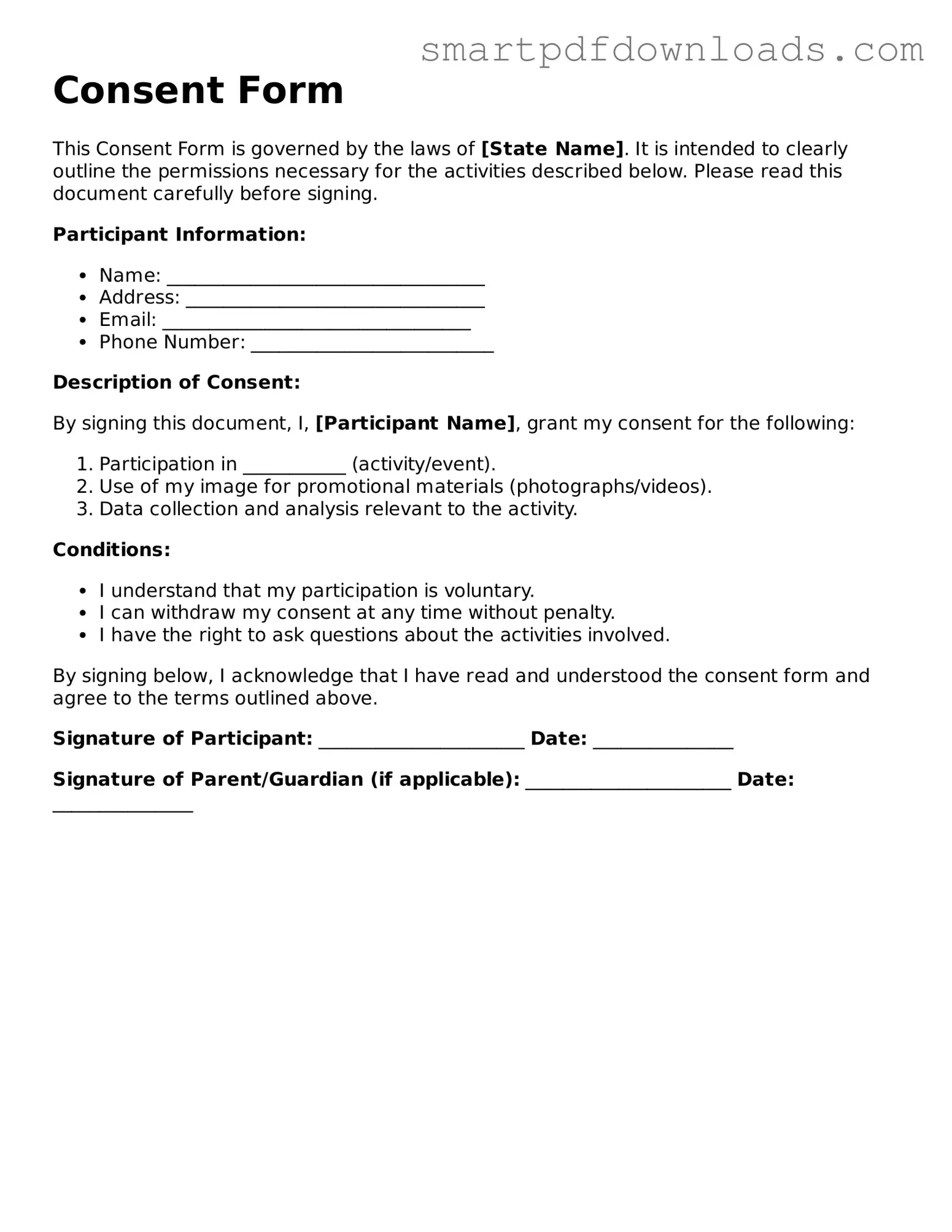Consent Form
This Consent Form is governed by the laws of [State Name]. It is intended to clearly outline the permissions necessary for the activities described below. Please read this document carefully before signing.
Participant Information:
- Name: __________________________________
- Address: ________________________________
- Email: _________________________________
- Phone Number: __________________________
Description of Consent:
By signing this document, I, [Participant Name], grant my consent for the following:
- Participation in ___________ (activity/event).
- Use of my image for promotional materials (photographs/videos).
- Data collection and analysis relevant to the activity.
Conditions:
- I understand that my participation is voluntary.
- I can withdraw my consent at any time without penalty.
- I have the right to ask questions about the activities involved.
By signing below, I acknowledge that I have read and understood the consent form and agree to the terms outlined above.
Signature of Participant: ______________________ Date: _______________
Signature of Parent/Guardian (if applicable): ______________________ Date: _______________
